Learn about the different systems for producing fruit crops
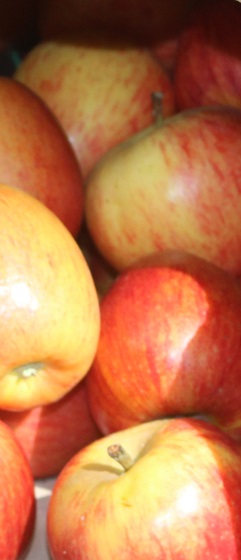 Learn about soils and nutrition.
Learn about soils and nutrition.- Learn about the production of different types of crop - soft fruits, nuts, berries.
- Learn about the different types of outdoor cropping system.
- Learn from highly knowledgeable tutors with real industry experience.
- Learn about the different types of growing systems and requirements of crops with the Certificate In Fruit Growing.
- Students will study the all important elements of site and crop selection which form part of the framework for the production of outdoor crops.
- This is an ideal course for those serious about growing their own fruit crop at home, or those looking to embark on a career in the fruit production industry.
- The Certificate In Fruit Growing has a nominal duration of 600 hours of study.
- ACS Courses offer students the flexibility to start when they want to and to study at their own pace (perhaps fitting studies around existing work or home commitments).
- Full support is given to students throughout the period of their study.
WHAT CAN BE GROWN?
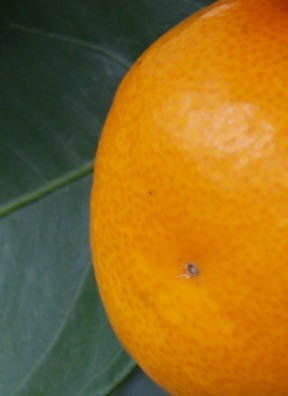 There are several things to consider in order or fruit to grow well: choosing the correct site, the right plants to suit your climate and allocating enough space for each tree or plant are important decisions. These are things that cannot readily be improved by cultural practice alone.
There are several things to consider in order or fruit to grow well: choosing the correct site, the right plants to suit your climate and allocating enough space for each tree or plant are important decisions. These are things that cannot readily be improved by cultural practice alone.
Fruiting plants will become a part of the framework of a landscape, impacted by everything else in the landscape. If you try to skimp on space they will never perform as well and will also never look good.
Commercial fruit farms commonly grow a limited range of fruit cultivars. They may grow only citrus or only deciduous fruit trees; or perhaps only grapes. There are benefits in this approach (economies of scale, marketing, etc.) but with this reduced biodiversity, comes disadvantages such as greater susceptibility to pest and disease.
Home gardens are often more bio diverse. They may fit in at least a few fruiting plants and there is a large variety to choose from: creepers like strawberries, cane fruits such as raspberries, climbers and vines including Chinese gooseberry, passion fruit, grapes and various fruiting shrubs such as currants, blueberries, feijoa, trees such as apples, pears, quinces and persimmons, tropical fruits and several varieties of citrus fruit.
Most common deciduous tree fruits take at least 3 to 4 years to crop well from planting. Strawberries crop well in the first year. Blueberries take several years to produce strongly. Walnuts and chestnuts can take 5 to 7 years before you get reasonable crops.
BERRY FRUIT
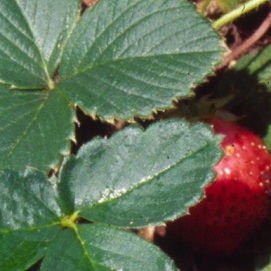
Berry fruit have certain advantages both as a commercial crop or in a home garden. Notably they are intensive crops, able to produce a lot more in a smaller space. As such, a viable strawberry farm may only require a few greenhouses, whereas a viable apple or citrus orchard may require several to many acres.
Unlike other fruits, most berries are small plants, able to be grown in smaller places, they are faster to mature, and often give you a crop in their first year. Though most berries come from temperate climates, you can also grow at least some types in much warmer areas, as long as they receive ample water and appropriate protection.
STRAWBERRIES
These are one of the most popular berries for both outdoor and indoor growing; in the ground, in hydroponics or in home gardens. They can be grown in a wide range of climates ranging from cool temperate regions to cooler positions in tropical areas.
Strawberries bear fruit for up to six months, with each plant yielding up to half a kilogram of delicious fruit each year. Strawberries are used fresh, marketed frozen, processed in foods such as jam and ice cream, or used to flavour drinks such as milkshakes.
They will benefit from protection against frosts, and against cold and wet conditions during autumn or steamy wet conditions that would encourage fungal rots and other diseases. Movable plastic tunnels known as cloches can give some protection and controlled environment hot houses. A bird net will make sure you get the fruit and not the birds!
Strawberries prefer deep, well drained, slightly acid soils, but avoid heavy clay soils. They are heavy feeders, so apply of large amounts of well-rotted organic matter such as composts and manures, prior to planting – but don’t add too much nitrogen rich fertilizer as you will get a lot of leaf growth at the expense of fruit. Side dressings of blood and bone or cow manure, with a couple of hands of sulphate of potash added per bucket, to stimulate fruit set and applied during active growth periods are also beneficial. Regular watering is also important for good fruit production.
Strawberries are usually planted form runners in the autumn or late winter. You can buy young plants in pots in spring too, and they may already be fruiting. This is a more expensive option, but is especially rewarding for children.
Installing a trickle irrigation system with individual drippers to each plant will give much higher yields in summer to autumn in warm climates or during dry spells.
Strawberries are prone to a viral disease which makes it necessary to treat plantings as a short term proposition. Plants are usually cropped for 2 3 years and then new plantings are carried out using certified virus free runners – it is better not to use runners from your own plants or those of friends as these are bound to be diseases (which only spreads the problem).
Harvest strawberries in the cooler part of the day every second day or so, pick them with the fruit stem intact except when you are making jam. This reduces the likelihood of fungal problems occurring. Store them in cool conditions e.g. fridge. If the berries are to be kept for any length of time they should be frozen.
RASPBERRIES
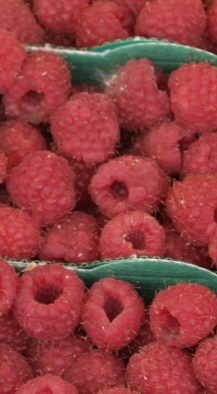 Raspberries prefer a cool protected, moist, but well drained site with acid soil, and are preferably grown on raised mounds. Raspberries need the support of a trellis or stake to grown on. The plants need a climate with some winter chilling to produce good crops. They are heavy feeders so they need regular applications of well-rotted compost or animal manures; make sure the soil is well prepared and add a handful of blood and bone per square metre of bed to add extra nitrogen.
Raspberries prefer a cool protected, moist, but well drained site with acid soil, and are preferably grown on raised mounds. Raspberries need the support of a trellis or stake to grown on. The plants need a climate with some winter chilling to produce good crops. They are heavy feeders so they need regular applications of well-rotted compost or animal manures; make sure the soil is well prepared and add a handful of blood and bone per square metre of bed to add extra nitrogen.
Summer fruiting canes produce fruit on two year old canes (stems) called floricanes. After the canes produce a crop they are removed in winter – once the canes are two years old the plant will have new canes (primocanes) that haven’t yet fruited as well as fruited canes – all the fruited canes need to be removed in winter at ground level, leaving the primocanes to fruit the following season; new shoots appear from the rootstock at ground level. Tie these un-fruited canes to the support. Autumn flowering varieties fruit on that season’s growth so they can be cut down to ground level after fruiting and new canes tied into a trellis in spring when they arise. Propagate by suckers, root cuttings or tip layers.
Raspberries are harvested in summer as they ripen – about twice weekly. Store the fruit in cool conditions as soon as they are picked. The fruit is generally eaten fresh, frozen or used for jam. Approx. 12 plants are adequate for a family. As they tend to sucker make sure you have a mowing strip either side of the bed – this prevent them overtaking your other garden beds.
HOW THE COURSE WORKS
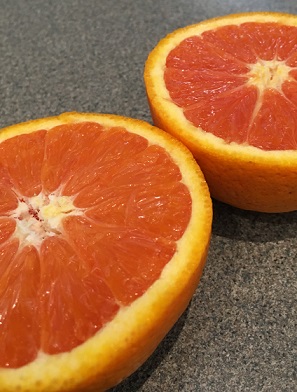 You can start the course at any time.
You can start the course at any time.
It is studied by distance learning, so you can study in the comfort of your own home. But this doesn't mean you are all alone in your studies. Our highly qualified and friendly tutors are there to help you every step of the way. If you have any questions at all, they are always happy to help.
To complete the course -
-
There is an assignment at the end of each lesson. So if there are 10 lessons in a module, there will be 10 assignments.
- At the end of each module, there is also an examination which you can take at a time and location to suit you.
To pass the course you are required to pass all assignments and exams. (Course fees do not include exam fees).
Each of the modules mentioned can also be studied as a standalone course if you prefer.
WHY STUDY THIS COURSE?
If you are serious about learning more on the subject of fruit production then this course will be ideal for you.
- You will learn to not only about selecting the right crop, but also understand the appropriate systems and environment for growing that crop.
- You will learn principles and theories applicable to growing fruit both at home and in a commercial environment.
- Generate a personal income from the sale of home produce or pursue a career in commercial fruit growing.
- In addition to increasing your skills and knowledge on the successful production of a fruit crop, you will learn about other essential factors such as the storage, marketing, and transportation of fruit crops.
The course is studied by distance learning and you can start at any time to suit you.
Enrolling is easy - just go to the top of this page and select your study method and payment option.
If you have any questions about studying with ACS, or want to know more about any of our courses, get in touch with our specialist tutors today. They will be happy to answer your questions and look at different study options to fit in with your goals.
Why Study with ACS?
Design your own learning pathway.
Study at your own pace, from anywhere, at any time.
Receive prompt, expert support from our team of committed and friendly tutors.
Your learning is our priority. We are flexible and adaptable to meet your educational needs!